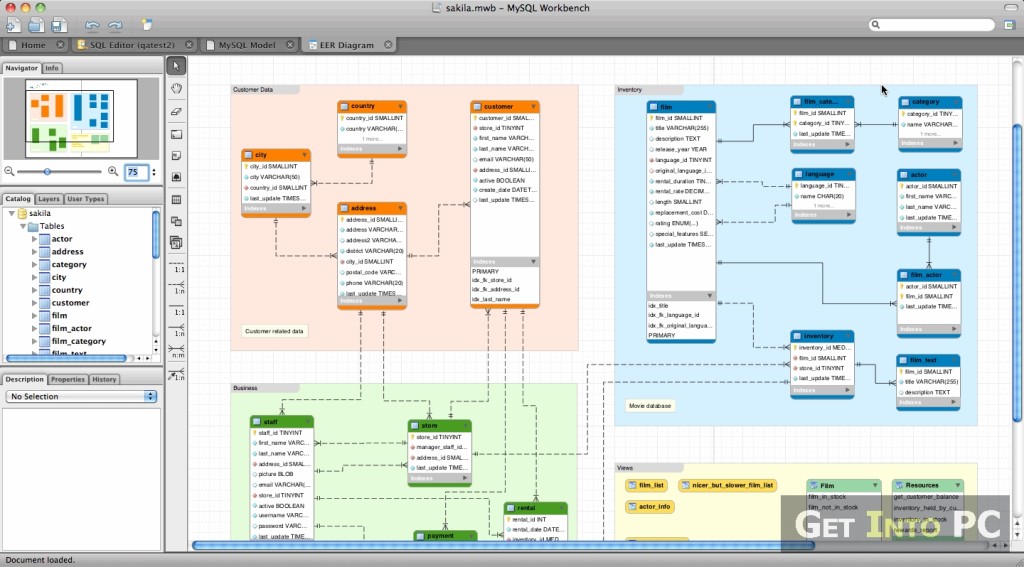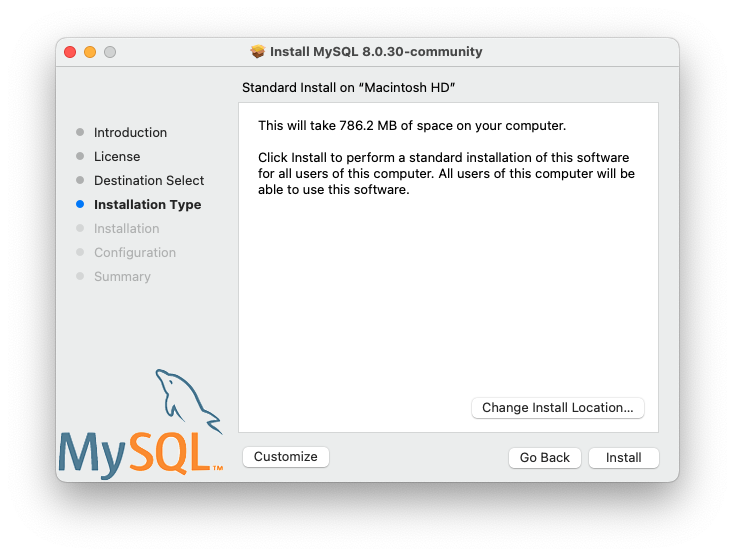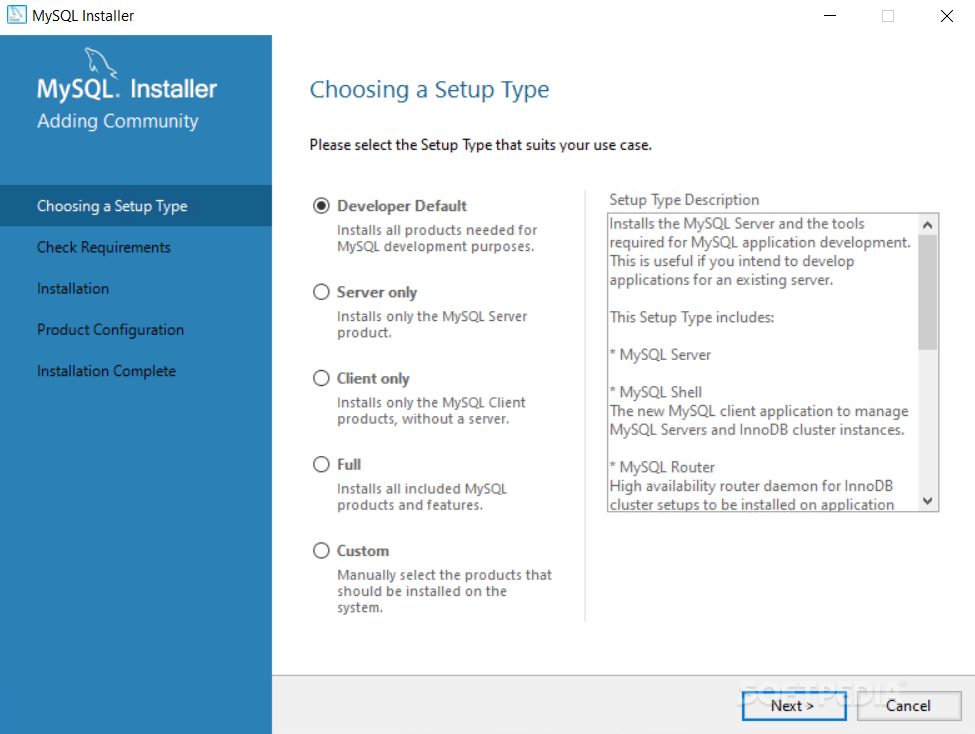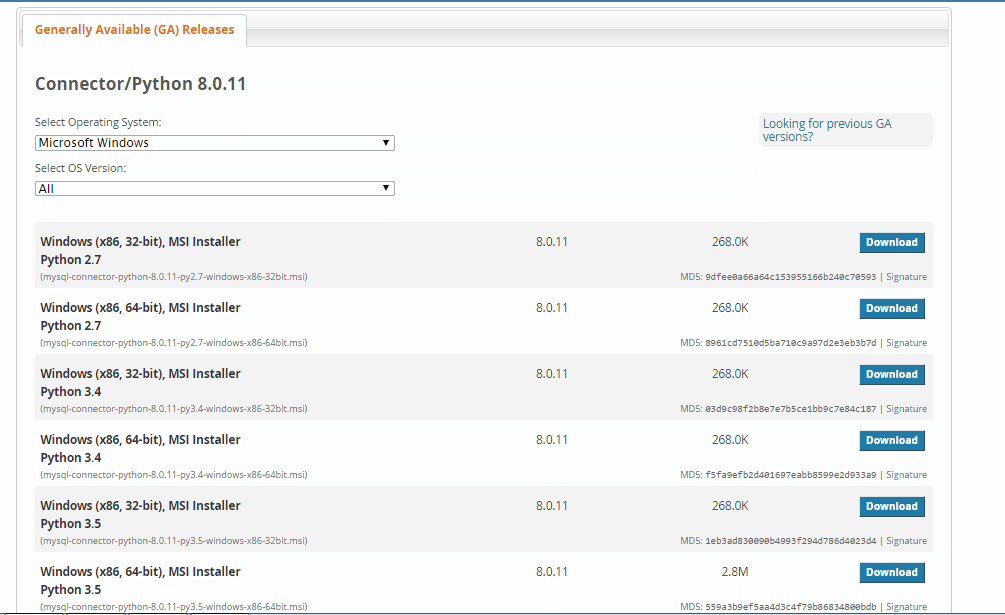Mysql Installer Mac Download

macOS Update: While these instructions still work, there are new posts for recent versions of macOS, the latest being Install Apache, PHP, and MySQL on macOS Mojave.
PHP Update: Mac OS X Yosemite comes pre-installed with PHP version 5.5 which has reached its end of life. After you complete this post, you should upgrade PHP on Mac OS X.
Somali songs and heeso by Qaraami Music. 34: Magool & Omar Dhuule Waa qaali Original Heeso Qaraami Q3. Heeso macaan mp3 download.
The first step is to download MySQL server. Go to the MySQL web site and select the version that matches your version of Mac OS. Archive version. After the DMG file finishes downloading click on it to open. Then open the installer inside and follow the installation steps. However, at least as of now MySQL generates a password automatically by default when you install. – J Woodchuck Oct 15 '17 at 20:59 It can sometimes be at /usr/local/bin/mysql, type which mysql to find out where mysql has been installed, and also it does not apply if you have installed using homebrew – jokerster Jun 4 '18 at 16:06.
I recently upgraded to Mac OS X Yosemite. It seems Mac OS X Yosemite makes my original post on installing Apache, PHP, and MySQL on Mac OS X obsolete. Specifically, Yosemite includes Apache 2.4. This post is a complete update for installing Apache, PHP, and MySQL on Mac OS X Yosemite.
A reminder that Mac OS X runs atop UNIX. Ai download free mac. So most UNIX software installs easily on Mac OS X. Furthermore, Apache and PHP come packaged with Mac OS X. To create a local web server, all you need to do is enable them and install MySQL.
I am aware of the web server software available for Mac OS X, notably MAMP. These get you started quickly. But they forego the learning experience and, as most developers report, can become difficult to manage.
Getting Started
First, open the Terminal app and switch to the root user to avoid permission issues while running these commands.
Enable Apache on Mac OS X
Verify It works! by accessing http://localhost
Enable PHP for Apache
First, make a backup of the default Apache configuration. This is good practice and serves as a comparison against future versions of Mac OS X.

Now edit the Apache configuration. Office 2010 for mac key. Feel free to use TextEdit if you are not familiar with vi.
Uncomment the following line (remove #):
Restart Apache:
You can verify PHP is enabled by creating a phpinfo() page in your DocumentRoot.

The default DocumentRoot for Mac OS X Yosemite is /Library/WebServer/Documents. You can verify this from your Apache configuration.
Now create the phpinfo() page in your DocumentRoot:
Verify PHP by accessing http://localhost/phpinfo.php
Install MySQL on Mac OS X
Note: If you are upgrading MySQL you should skip this section and instead read this.
- Download the MySQL DMG for Mac OS X
- Install MySQL
The README suggests creating aliases for mysql and mysqladmin. However there are other commands that are helpful such as mysqldump. Instead, I updated my path to include /usr/local/mysql/bin.
Note: You will need to open a new Terminal window or run the command above for your path to update.
I also run mysql_secure_installation. While this isn't necessary, it's good practice.
Connect PHP and MySQL
You need to ensure PHP and MySQL can communicate with one another. There are several options to do so. I do the following:
Additional Configuration (optional)

The default configuration for Apache 2.4 on Mac OS X seemed pretty lean. For example, common modules like mod_rewrite were disabled. You may consider enabling this now to avoid forgetting they are disabled in the future.
I edited my Apache Configuration:
I uncommented the following lines (remove #):
Note: Previous version of Mac OS X ran Apache 2.2. If you upgraded OS X and previously configured Apache, you may want to read more about upgrading to to Apache 2.4 from Apache 2.2.
If you develop multiple projects and would like each to have a unique url, you can configure Apache VirtualHosts for Mac OS X.

If you would like to install PHPMyAdmin, return to my original post on installing Apache, PHP, and MySQL on Mac OS X.
Find this interesting? Let's continue the conversation on Twitter.
Introduction
MySQL is an opensource, relational database management system. Its name is the combination of two words that are My + SQL where my is the name of co-founder Michael Widenius's daughter and SQL is the abbreviation of Structured Query Language.
MySQL is widely used as a database system in various well-known companies like Google and Facebook. In this tutorial, we will learn the installation process of MySQL server on MacOS.
Prerequisites

- MacOS
- Login as an administrator on terminal.
Installation
Following steps are used to install MySQL on MacOS.
1) Download the latest version
Download the latest version of MySQL community server that is 5.7.20 from its official website or simply copy and paste https://dev.mysql.com/downloads/file/?id=473576 into our browser search bar. The file will be downloaded in disk image format which is to be mounted first on our volumes directory.
2) Mount the disk image file
Hdiutil is used with the mount option to mount the disk image file on volumes directory of root.
3) Using Installer to Install MySQL package
The command installs MySQL community server to the root directory. During the installation process, it also sets the default password for root to access MySQL.
Office 2019 mac download link. When we install MySQL on MacOS, a default username and password is created which is shown to the user at the time of installation.
4) Unmount the Disk Image File
The MySQL package mounted on volumes directory needs to be unmounted. Hdiutil is used with the unmount option to do so.
5) Starting MySQL Pentax digital camera utility 5 download mac installer.
On MacOS, all the support files are located at /usr/local/MySQL. Support-Files contains MySQL.server which is actually started when we need to access our database. We must have the path information of MySQL server in order to start MySQL. We must have super user permissions to start and stop MySQL database.
https://lasopacreator625.weebly.com/world-clock-widgets-for-mac.html. 6) Working on MySQL Command Line
1. Accessing from command line
To run MySQL from command line, we need to start MySQL server first. Then, following command will be executed.
Where root is the username and password is r>mpyW,-J4xS .
2. Create database
To create database, we need to execute a SQL query which is as follows.
7) Stopping MySQL
To stop database, use the following command.
Mysql 8.0 Installer Download
